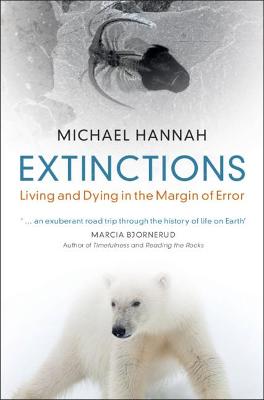Reviewed by annieb123 on
Extinctions is a sobering, science based, nonfiction klaxon call-to-arms by Dr. Marcia Bjornerud. Due out 16th Sept 2021 from Cambridge University Press, it's 325 pages and will be available in hardcover and ebook formats. It's worth noting that the ebook format has a handy interactive table of contents as well as interactive links throughout. I've really become enamored of ebooks with interactive formats lately; it makes it so easy to find information with the search function.
This is a meticulous look at the prehistoric past, recent past, present and future of extinction level events on Earth, and how they changed the course of the planet. The writing is precise and scientifically correct, but perfectly accessible and understandable, and horrifying. The author doesn't mince words at all and it's extremely distressing.
This is not a handbook about how to live a greener life and recycle our plastic. She does a good job pointing out that we're literally teetering on the knife edge and unless something is done right away on an unprecedented scale, we're going to find out exactly how long it takes to recover from a widespread extinction event (assuming humans come out the other side which is far from certain).
The book includes a bibliography arranged by chapters in alphabetical order, as well as a cross-referenced index. The main body of the work is also well annotated.
Five stars. This would make a good selection for library acquisition, as a support text for earth science and similar classroom subjects, and for fans of popular science writing.
Disclosure: I received an ARC at no cost from the author/publisher for review purposes.
Reading updates
- Started reading
- 4 September, 2021: Finished reading
- 4 September, 2021: Reviewed
